10 Kitchen Gadgets Inspired by Tools Found in Other Countries
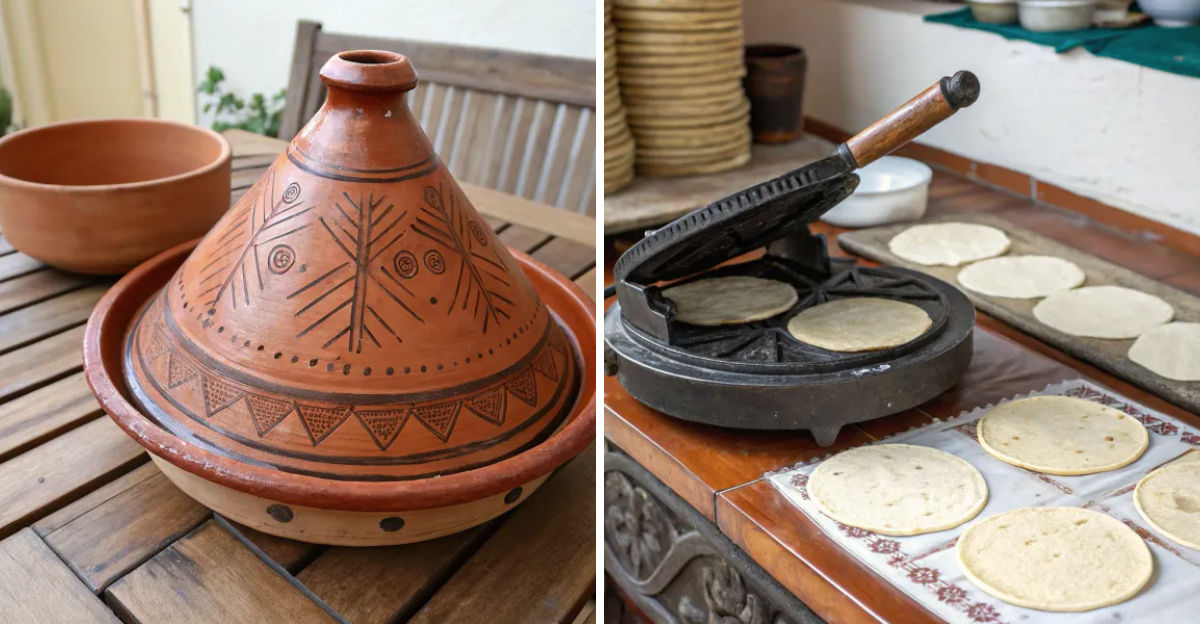
Cooking has long been a way to explore and appreciate different cultures from around the world. Many of the kitchen tools we use today actually have roots in other countries, where they were first created to solve everyday cooking needs. From Asia to Africa to Europe, each region came up with thoughtful tools and gadgets that helped make cooking a little easier and meals more flavorful. Today, these global kitchen tools allow home cooks everywhere to try out and enjoy traditional dishes from many cultures, all from the comfort of their own kitchens.
1. Chinese Wok
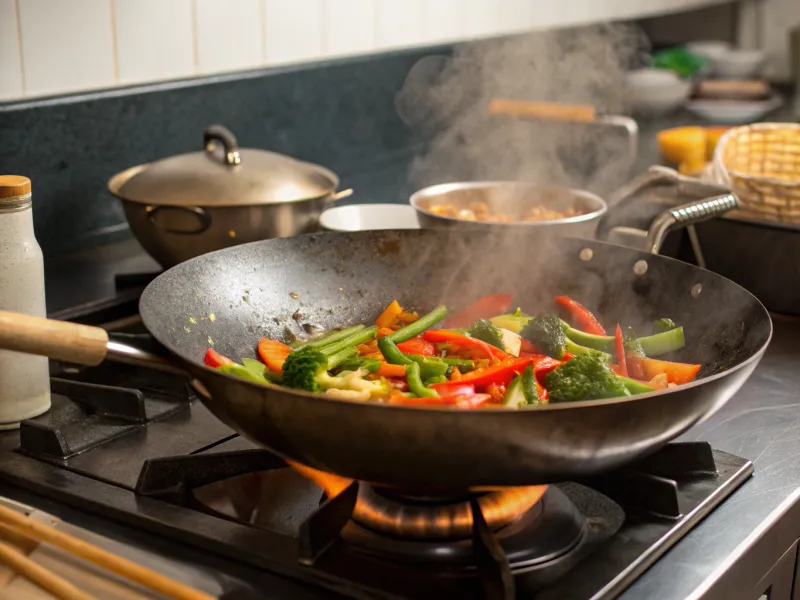
The wok started as a simple cooking pan in ancient China over many years ago. Its round bottom and high curved sides make it different from regular frying pans. This shape helps food cook quickly and evenly because heat spreads all around the curved surface. Chinese cooks use woks for stir-frying vegetables, steaming fish, and even making soup. The high sides prevent food from spilling out when you toss ingredients around. Modern woks work on gas stoves and electric cooktops, bringing authentic Chinese cooking methods to kitchens .
2. Moroccan Tagine
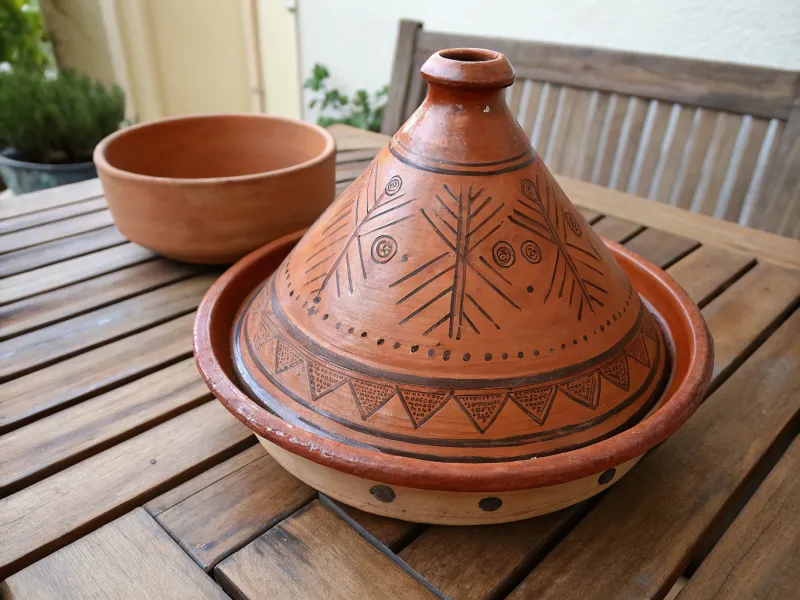
Morocco cone shaped cooking pot that looks like a pointed hat sitting on a shallow dish. The tall, narrow top does something clever during cooking. Steam from the food rise up into the cone, then cools down and drips back onto the ingredients below. This keeps meat tender and vegetables moist without adding extra water. Moroccan families have used tagines for hundreds of years to make slow-cooked stews. The clay material holds heat well and adds earthy flavors to the food inside.
3. Mexican Tortilla Press
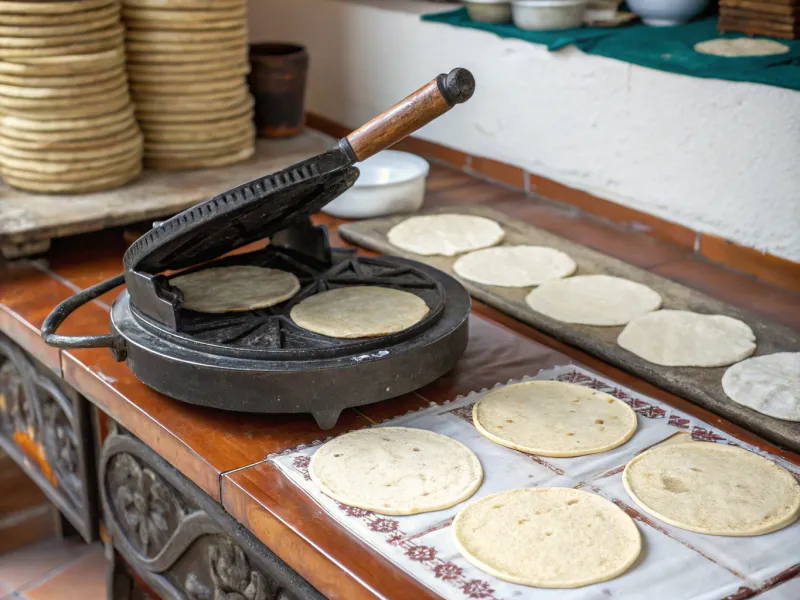
Mexican cooks invented this metal press to solve a daily problem making tortillas by hand took too long and the results were uneven. The press has two flat plates connected by a hinge. You place a ball of corn dough between the plates, then push down the handle with firm pressure. This flattens the dough into a thin, round tortilla in seconds. The weight of the cast iron ensures each tortilla comes out the same thickness. Mexican families use these presses daily to make fresh tortillas for tacos, burritos, and other traditional meals.
4. Chinese Bamboo Steamer
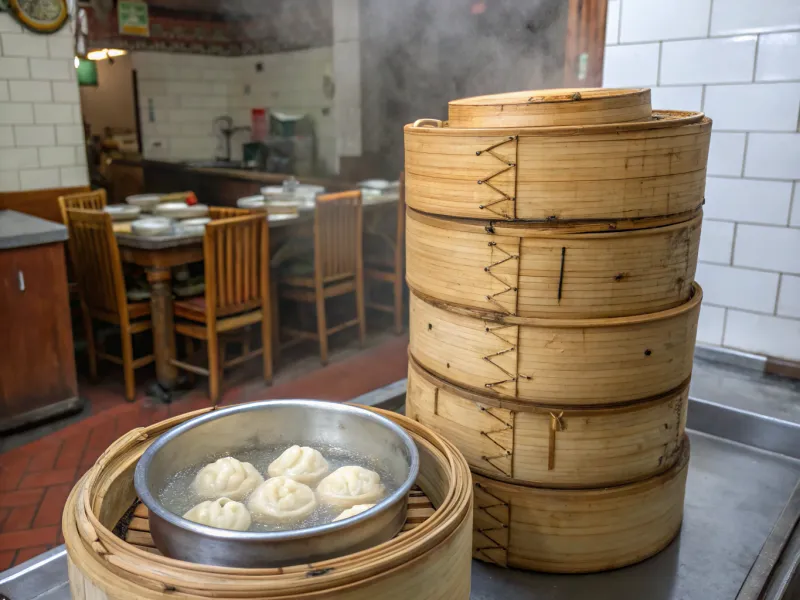
Chinese kitchens have used these woven bamboo baskets for over some years to cook food with gentle steam. The baskets stack on top of each other over a pot of boiling water. Bamboo naturally absorbs extra moisture, so food doesn’t get soggy like it might in metal steamers. You can cook different foods in each level at the same time. Dumplings, fish, and vegetables all taste better when steamed this way because they keep their natural flavors and nutrients. The bamboo also adds a subtle woody taste that enhances the food inside.
5. Italian Pasta Machine
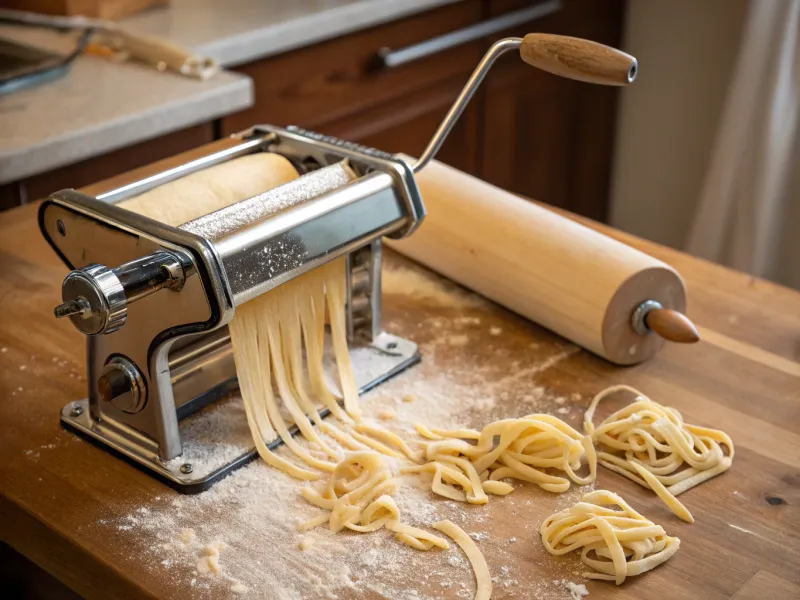
Italy has made this hand cranked machine to help home cooks make fresh pasta just like professional chefs. Two metal rollers press and stretch the dough as you turn the handle. The machine has different settings to make the pasta thinner or thicker depending on what type you want. Some machines also have cutting attachments for making spaghetti or fettuccine. Fresh pasta made with this machine tastes much better than dried pasta from a box. Italian families pass down these machines through generations, and many are still working after decades of use.
6. Indian Spice Grinder
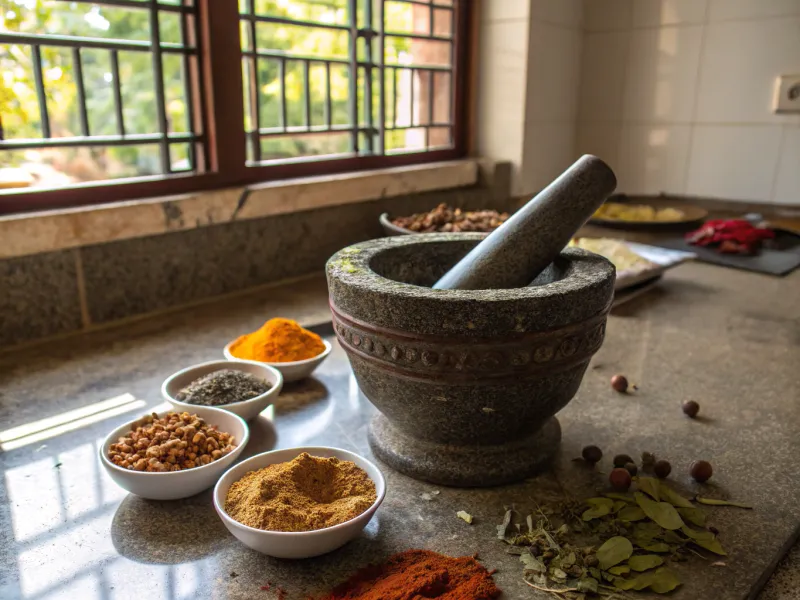
Indian cooking relies on freshly ground spices for the best flavors, which is why some Indian kitchens has one of these grinding tools. Some are electric, while traditional ones use stone surfaces. Grinding whole spices right before cooking releases oils and aromas that pre-ground spices from jars have already lost. The grinder breaks down tough spices like cardamom pods and cinnamon sticks. Indian cooks grind different spice combinations for each dish they make. This tool helps them control the texture and intensity of flavors in curries, rice dishes, and vegetable preparations.
7. Thai Mortar and Pestle
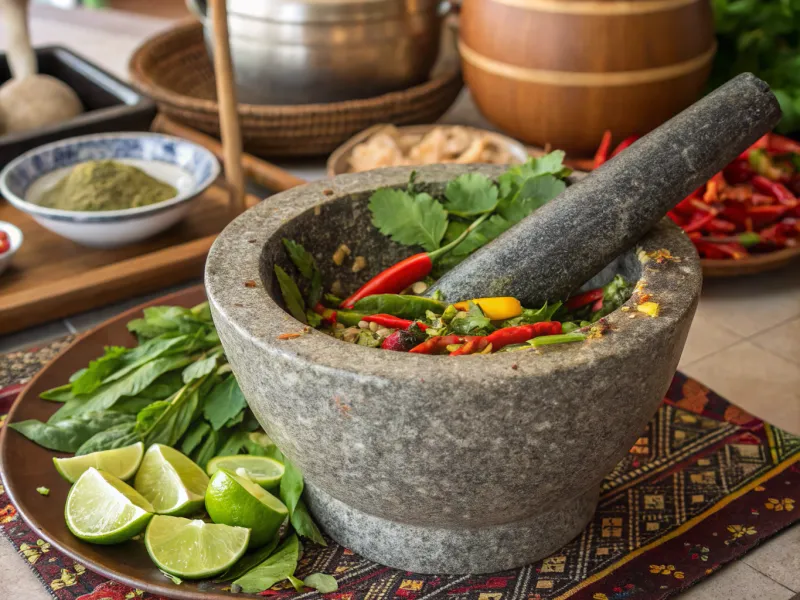
Thailand’s version of this ancient grinding tool is much larger and heavier than most others around the world. Thai cooks use granite or clay mortars with wooden pestles. The rough surface of the stone crushes herbs and spices better than smooth surfaces, releasing more flavor oils. Thai curry pastes need this crushing action to blend ingredients properly. Making curry paste by hand takes time and effort, but the results taste much better than store bought versions. The mortar and pestle also work well for making papaya salad and other traditional Thai dishes that need ingredients crushed rather than chopped.
8. Japanese Mandoline Slicer
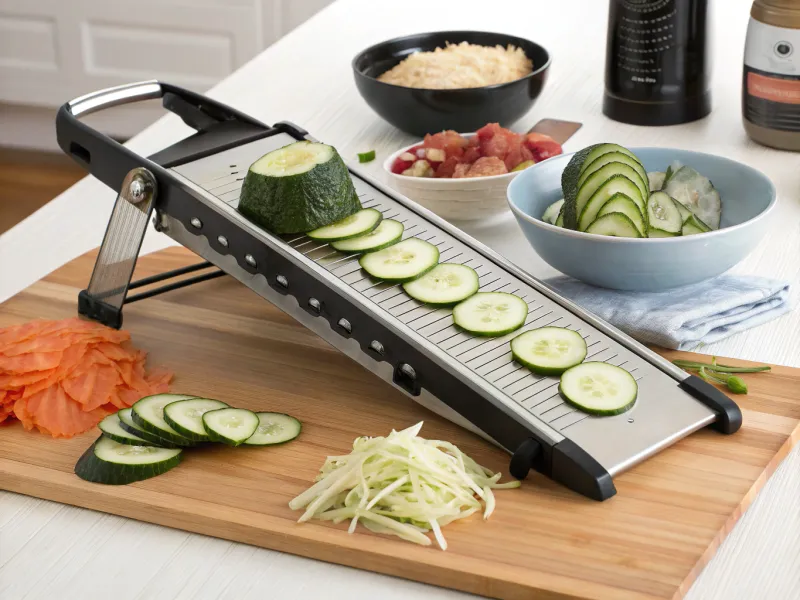
Japanese chefs developed this precise slicing tool because their cooking requires vegetables cut to exact thicknesses. The adjustable blade can slice ingredients paper thin or slightly thicker. Sushi preparation demands uniform cuts, and this tool delivers consistent results every time. The sharp blade glides through vegetables like cucumbers, radishes, and onions with minimal effort. Safety features like hand guards protect fingers from the extremely sharp blade. Professional Japanese kitchens rely on these slicers for garnishes and vegetable preparations.
9. Indian Tandoor Oven
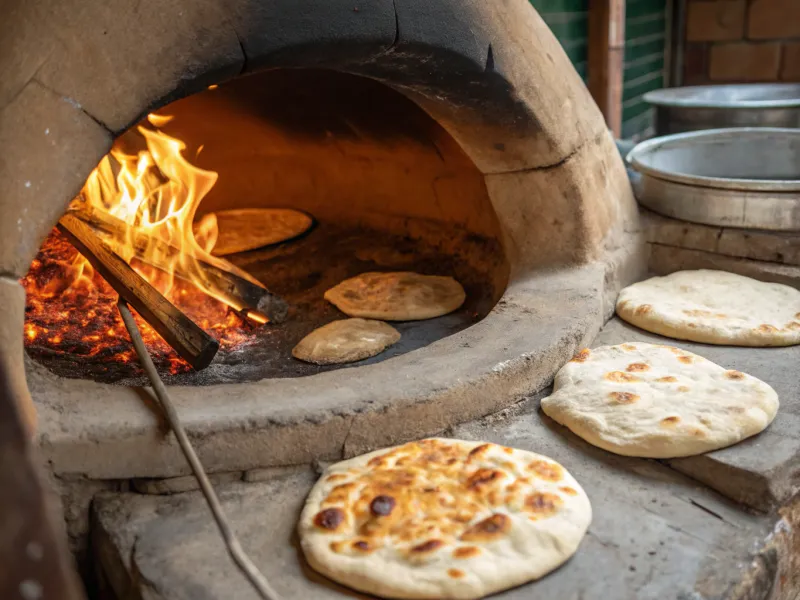
This clay oven from India reaches temperatures much higher than regular home ovens, sometimes over 900 degrees Fahrenheit. The cylindrical shape and clay walls hold heat well. Naan bread sticks to the hot walls and bakes in just minutes, developing those characteristic bubbles and char marks. Meat and vegetables cook quickly at these high temperatures while staying juicy inside. Traditional tandoors burn wood or charcoal, but modern versions work with gas for easier home use. The intense heat and clay material give food a smoky flavor.
10. Korean Stone Bowl
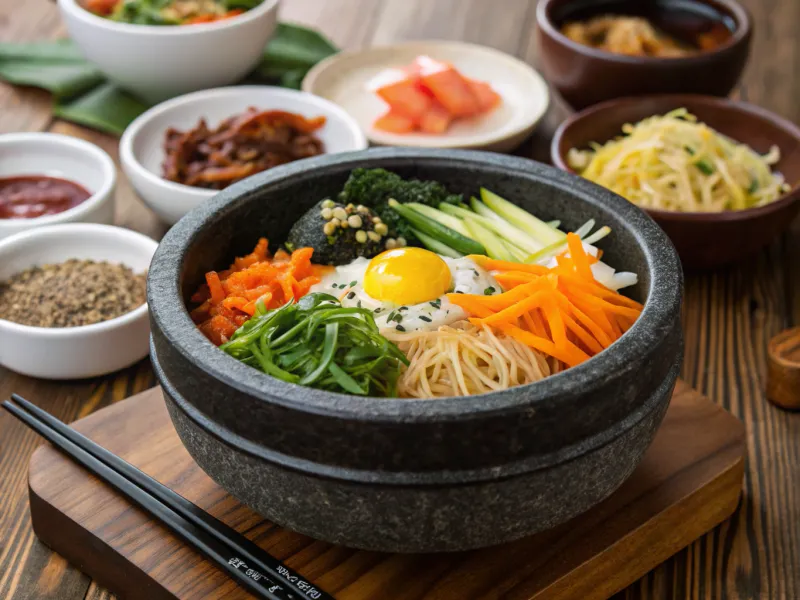
Korean stone bowls, called dolsot, are carved from solid granite and used to serve sizzling hot dishes. The stone holds heat for a long time after leaving the stove. Bibimbap served in these bowls continues cooking at the table, creating a crispy rice layer at the bottom that diners mix with the other ingredients. The stone also adds minerals to the food. Before first use, these bowls need seasoning with rice water to prevent cracking. Korean families treasure their stone bowls and use them for generations, as the granite improve after some period.
